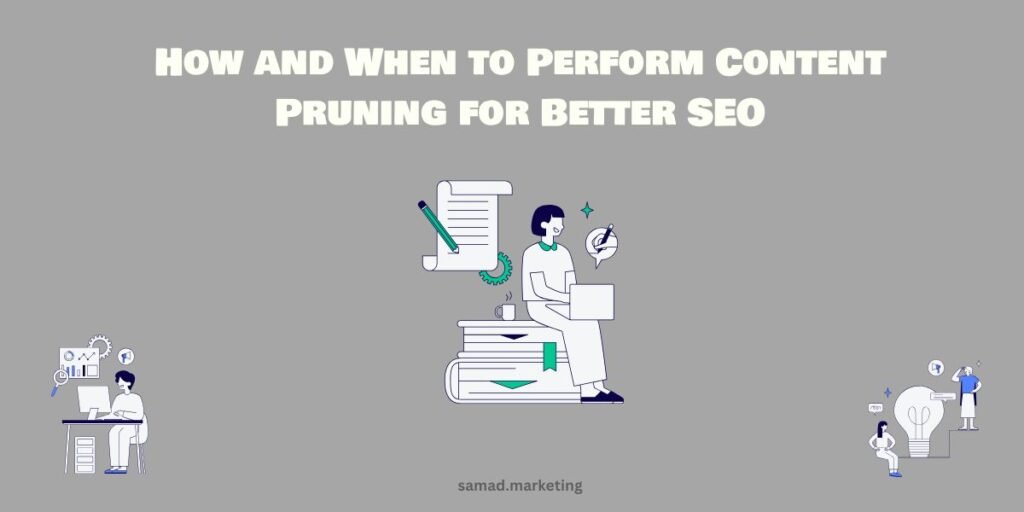When you think of SEO, you probably focus on creating more content, but sometimes, less is more. That’s where content pruning comes in.
Content pruning means removing, updating, or consolidating underperforming or outdated content from your website to improve overall SEO performance. In this post, you’ll learn what content pruning is, why it matters, how to do it properly, and when it’s the right time.
🌱 What Is Content Pruning?
Content pruning is the process of trimming away content that is no longer valuable to your site or your audience. This includes:
- Old blog posts with no traffic
- Duplicate or thin content
- Pages with outdated information
- Low-quality articles that no longer align with your strategy
Just like pruning a plant helps it grow better, pruning your content helps your website become healthier and more authoritative.
🔍 Why Is Content Pruning Important for SEO?
Google values quality over quantity. Keeping low-value or outdated pages on your site can:
- Dilute your domain authority
- Confuse search engines about your expertise
- Increase crawl budget waste
- Lower your average content performance
Benefits of content pruning:
- Improves crawl efficiency
- Enhances overall content quality
- Boosts rankings for your top-performing pages
- Increases organic traffic
🕵️♂️ How to Identify Content That Needs Pruning
Use these metrics and tools to find underperforming content:
1. Google Search Console
- Go to “Performance” → check which pages have zero clicks or impressions over the last 6–12 months.
2. Google Analytics
- Look for pages with:
- Very low page views
- High bounce rate
- Low average time on page
3. SEO Tools (like Ahrefs, SEMrush, Screaming Frog)
- Identify:
- Pages with no backlinks
- Duplicate or thin content (under 300–500 words)
- Broken or outdated URLs
🧰 Content Pruning: 3 Options
Once you’ve identified low-performing pages, you have three options:
✅ 1. Update and Improve
If the topic is still relevant, update it by:
- Refreshing outdated info
- Adding new sections, images, and internal links
- Optimizing for new keywords
- Making it more useful or detailed
🔀 2. Merge with Related Content
If you have multiple weak pages covering similar topics:
- Combine them into one high-quality, comprehensive post
- Use 301 redirects to point old URLs to the new, merged page
This boosts authority and consolidates link equity.
❌ 3. Delete and Redirect
If the content is:
- Completely irrelevant
- No longer useful
- Too outdated to fix
Then delete it and:
- Redirect the URL to a relevant page (if possible)
- If not, let it return a 410 status to signal that the content is gone permanently
📅 When to Perform Content Pruning
Regular audits, though not necessarily weekly, put you in the driver’s seat, allowing you to stay proactive and in control of your site’s performance.
Ideal times:
- Every 6 or 12 months
- After a major site redesign or migration
- Before a Google algorithm update (if you suspect low-quality content may affect your rankings)
A well-maintained site shows Google that you care about quality and user experience.
✍️ Content Pruning Checklist
Here’s a simple checklist you can follow:
✅ Identify low-performing pages (Google Search Console, Analytics, SEO tools)
✅ Decide whether to update, merge, or delete
✅ Track and document changes
✅ Set up proper redirects
✅ Monitor rankings and traffic post-pruning
⚠️ Common Mistakes to Avoid
- Deleting pages with backlinks without redirecting them
- Removing content too aggressively (don’t delete evergreen or niche content just because it has low traffic)
- Ignoring internal links pointing to deleted pages
- Not updating sitemaps after deletions
Remember, careful planning and diligent monitoring are key to successful content pruning. Make sure to monitor any changes and adjust your strategy as needed.
🧭 Final Thoughts
Content pruning is a powerful SEO strategy that many people overlook. It involves not just removing content, but also enhancing the quality and relevance of your website. This idea should motivate you to take action. By regularly trimming the dead weight, you allow your best content to thrive, helping search engines and users alike.

